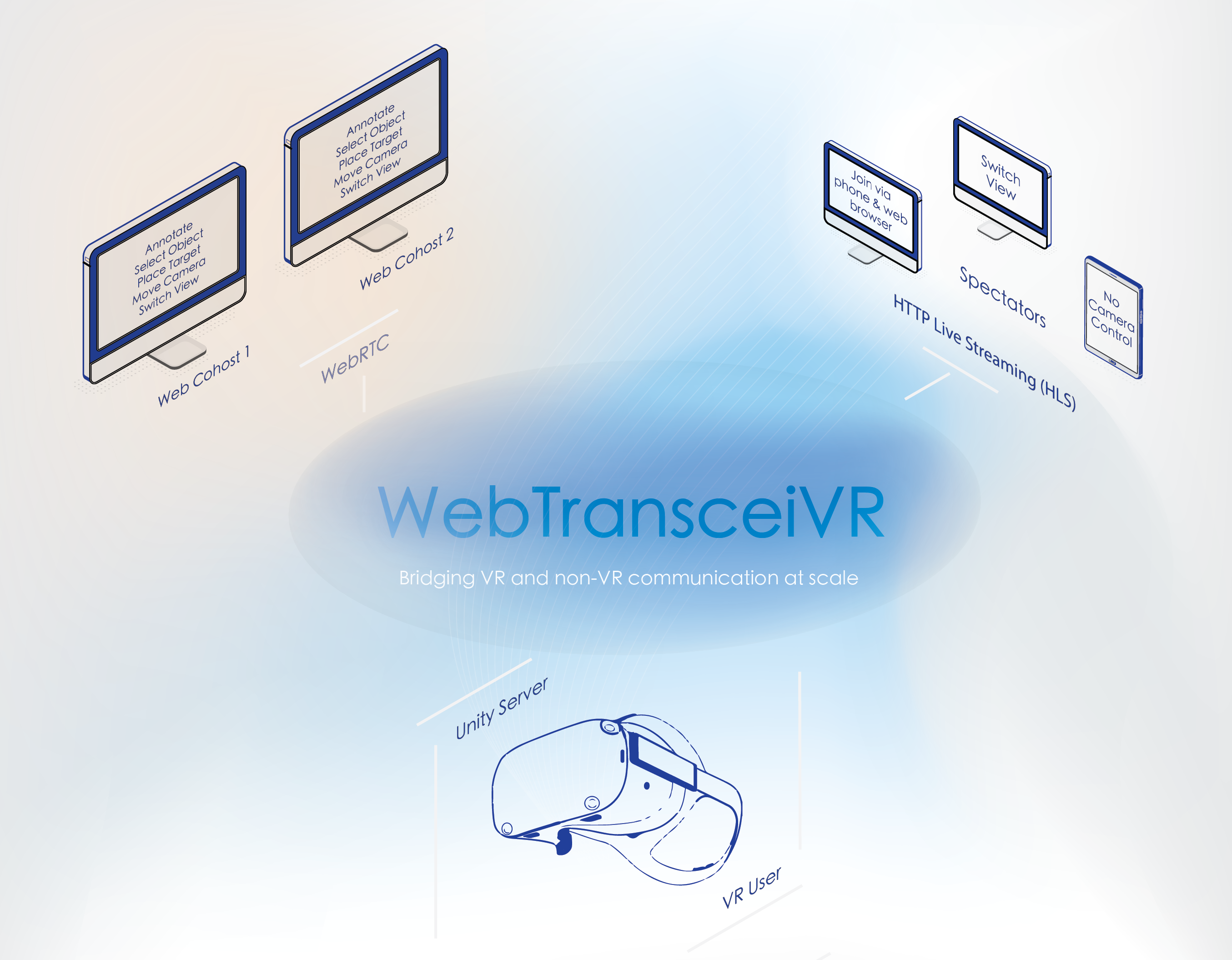Student Papers Accepted by the ACM CHI Conference

Two MDes students’ papers, done in collaboration with EECS students, “WebTransceiVR – Asymmetric VR Collaboration At Scale “and “Generative VR: Spatial Interactions in Virtual Reality to Guide Generative Design “ have been accepted by the ACM CHI Conference on Human Factors in Computing Systems premier international conference of Human-Computer Interaction HCI. Papers were developed in Bjorn Hartmann’s class Immersive Computing and Virtual Reality.
WebTransceiVR – Asymmetric VR Collaboration At Scale
Daisy Chen, with EECS team members Haohua Lyu, Cyrus Vachha, Odysseus Pyrinis, and Avery Liou. Mentored by Balasaravanan Thoravi Kumaravel, and Bjoern Hartmann.
Increasing adoption of Virtual Reality (VR) systems in various fields has created the need for collaborative work and communication. Today, asymmetric communication between a VR user and other non-VR users remains a challenge. The VR user cannot see the external non-VR users, and the non-VR users are restricted to the VR user’s first-person view. To address this, we propose WebTransceiVR, an asymmetric collaboration toolkit that when integrated into a VR application, allows multiple non-VR users to share the virtual space of the VR user. It allows external users to enter and be part of the VR application’s space through standard web browsers on mobile and computers. These users can explore and interact with the other users, the VR scene as well as the VR user. WebTransceiVR also includes a cloud-based streaming solution that enables many passive spectators to view the scene through any of the active cameras. We conduct informal user testing to gain additional insights for future work.

Generative VR: Spatial Interactions in Virtual Reality to Explore Generative Design
Xinyi Zhu and Kathy Wang, with EECS team members Ananya Nandy, Nicholas Jennings, and Fanping Sui.
An interactive system where users can directly interact with the candidate designs as a method for guiding the exploration of a design space from a generative design system. The connection of these VR interactions with generative design provides humans with a better sense of how their designs might fit into the relevant environment as well as a possible future mechanism for providing generative algorithms with richer human feedback.
To accomplish this, Grasshopper defines a parametric model and takes a generative algorithm to generate a design solution space. Then, the user explores the design space and filters the design options through VR interaction in Unity. Finally, Unity sends the parameters of the selected designs back to the generative algorithm.

About ACM CHI
The ACM CHI Conference on Human Factors in Computing Systems is the premier international conference of Human-Computer Interaction (HCI). CHI – pronounced ‘kai’ – annually brings together researchers and practitioners from all over the world and from diverse cultures, backgrounds, and positionalities, who have as an overarching goal to make the world a better place with interactive digital technologies.
CHI 2022 is structured as a Hybrid-Onsite full conference from April 30–May 5 in New Orleans, LA.